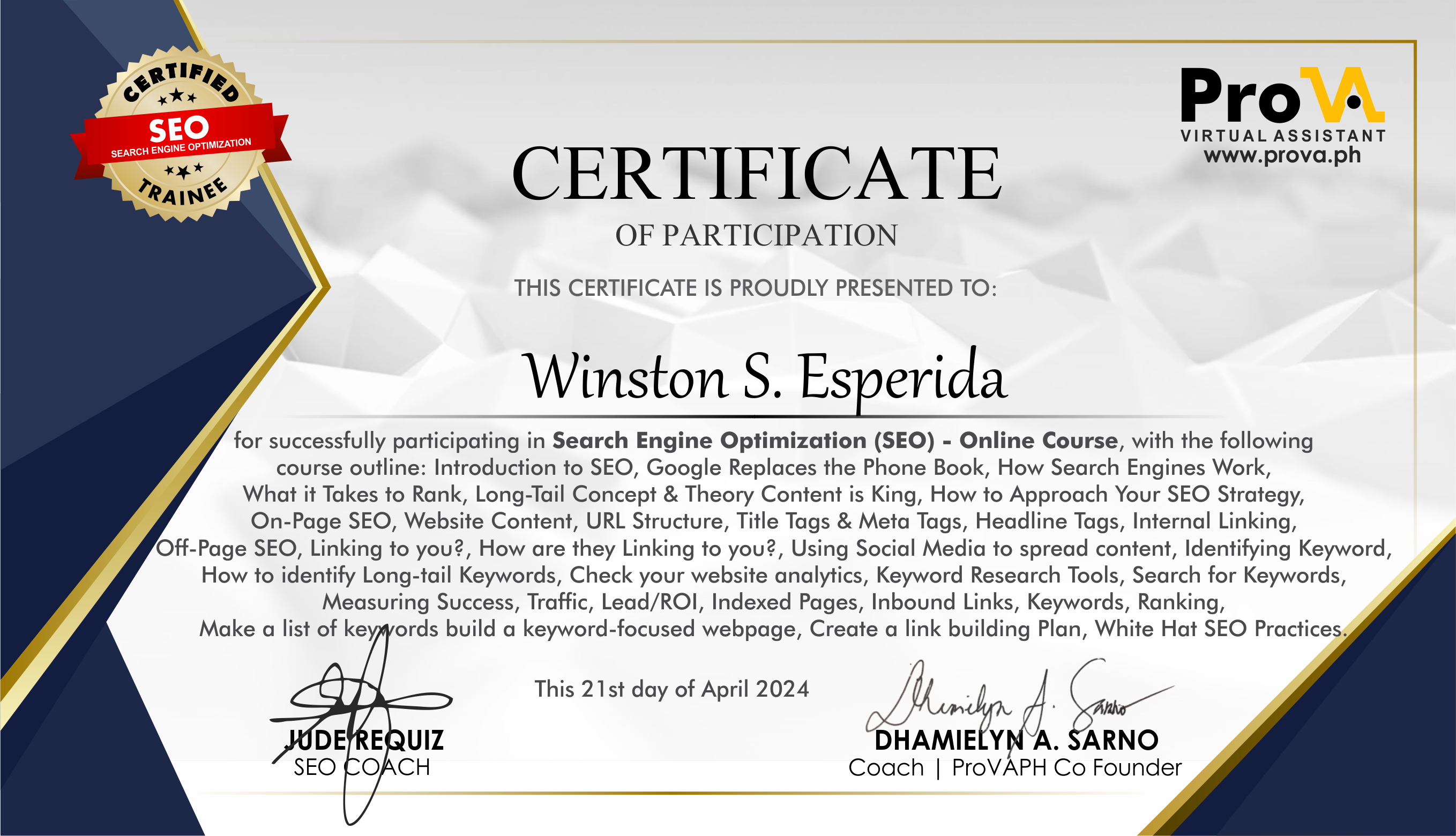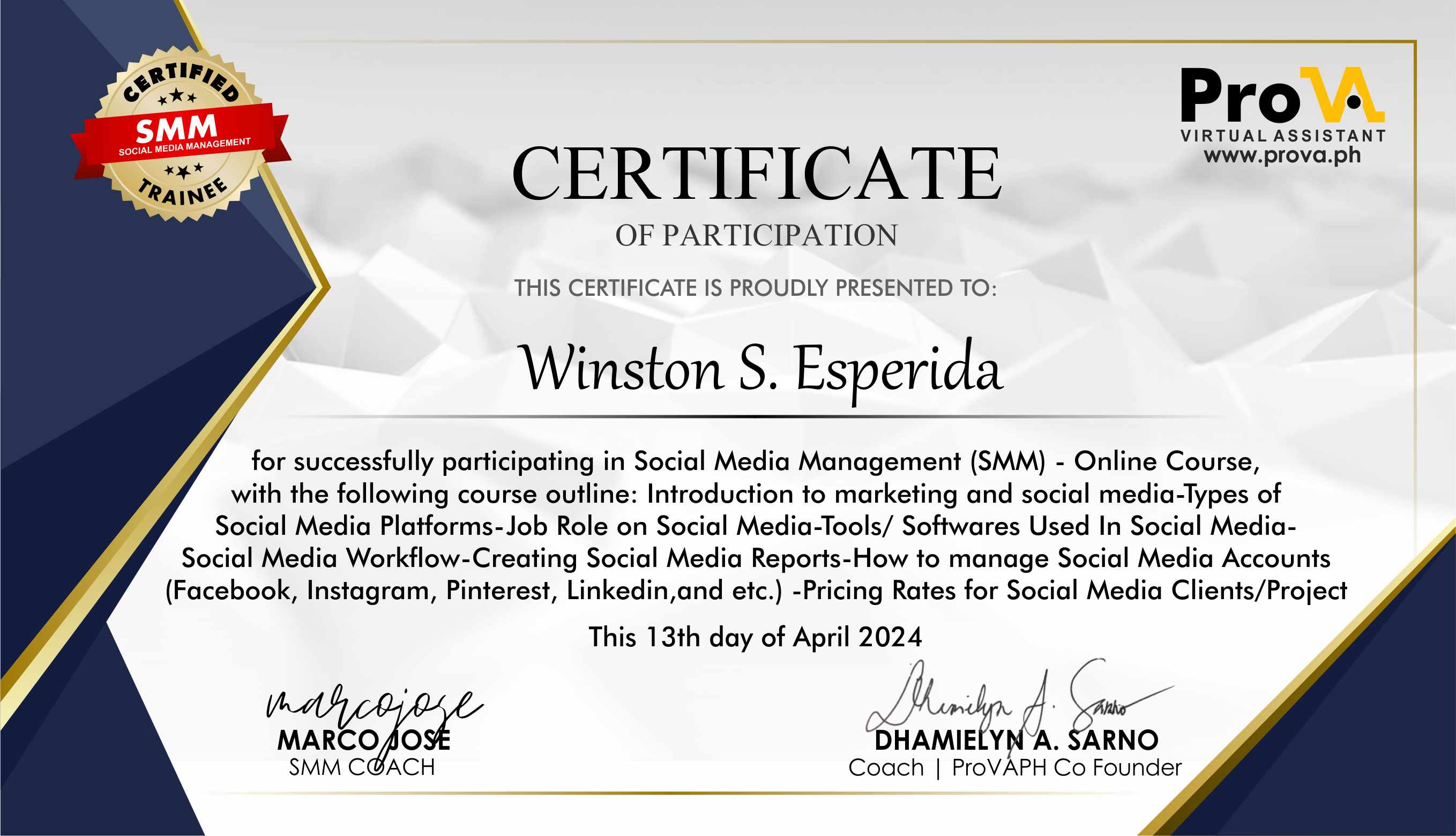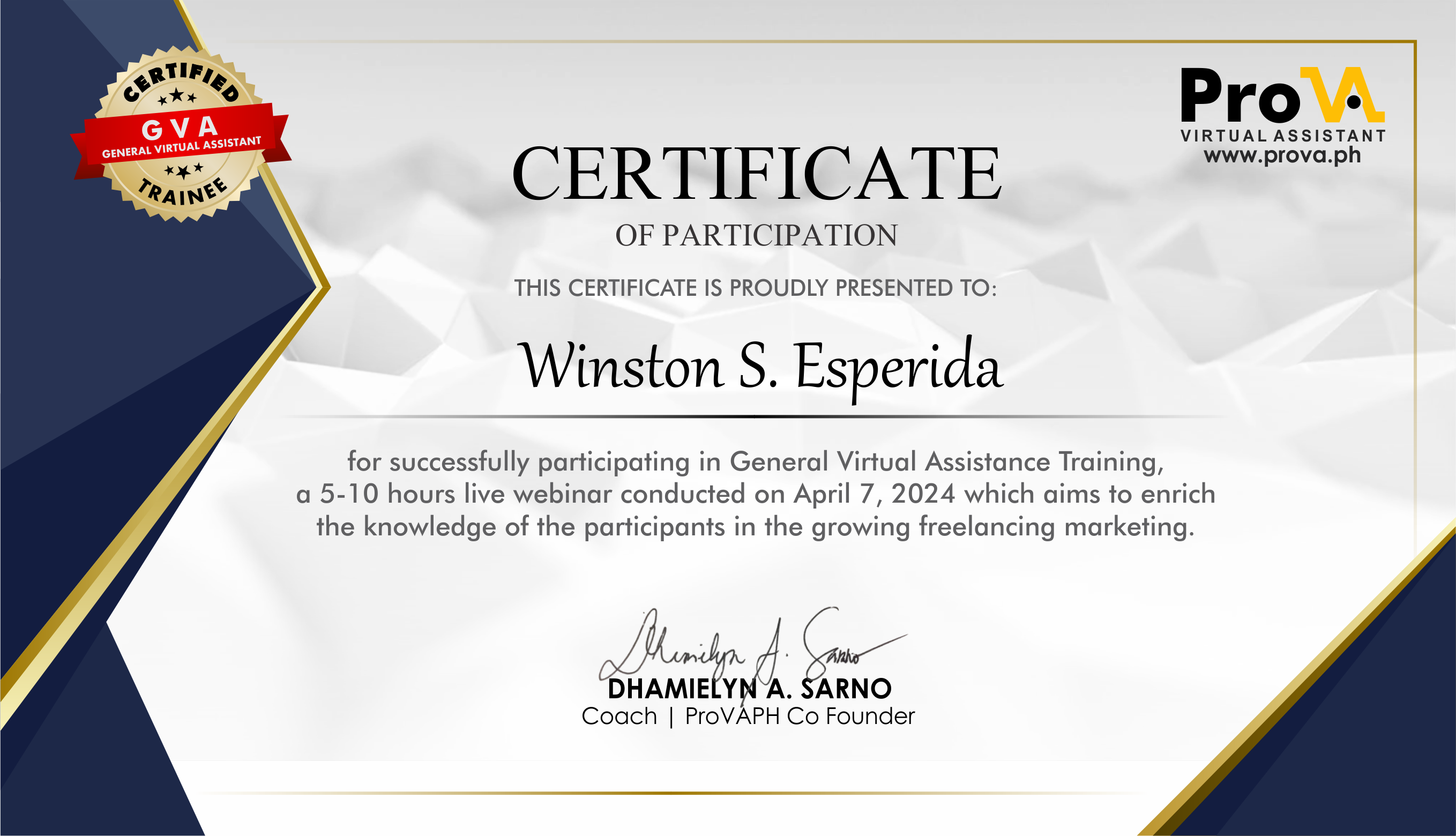SEO Training Certificate

Keyword Research: Identify relevant keywords for your content. Use tools like Google Keyword Planner, SEMrush, or Ahrefs to find keywords with high search volume and low competition.
Content Structure: Organize your content into a clear structure with headings (H1, H2, H3) and subheadings. Use bullet points and numbered lists to make your content more scannable.
Quality and Relevance: Create high-quality, relevant content that provides value to your audience. Google's algorithms prioritize content that is informative and addresses user intent.
Keyword Optimization: Place your primary keyword in the title, meta description, and throughout the content. However, avoid overusing keywords, as this can lead to keyword stuffing, which can harm your SEO efforts.
Meta Tags: Write a compelling meta title and description that accurately reflect the content of your page and include relevant keywords.
Internal and External Links: Include internal links to other relevant pages on your website to improve navigation and user engagement. Additionally, include external links to reputable sources to add credibility to your content.
Mobile Optimization: Ensure your content is optimized for mobile devices, as Google prioritizes mobile-friendly websites in its search results.
Page Speed: Improve your website's loading speed to enhance user experience. Use tools like Google PageSpeed Insights to identify and fix any issues that may be slowing down your site.
Regular Updates: Keep your content up to date and relevant to maintain its SEO value. Update old content with new information or repurpose it into different formats to attract more traffic.
User Experience: Prioritize user experience by creating content that is easy to read and navigate. Use images, videos, and infographics to enhance your content and make it more engaging.





